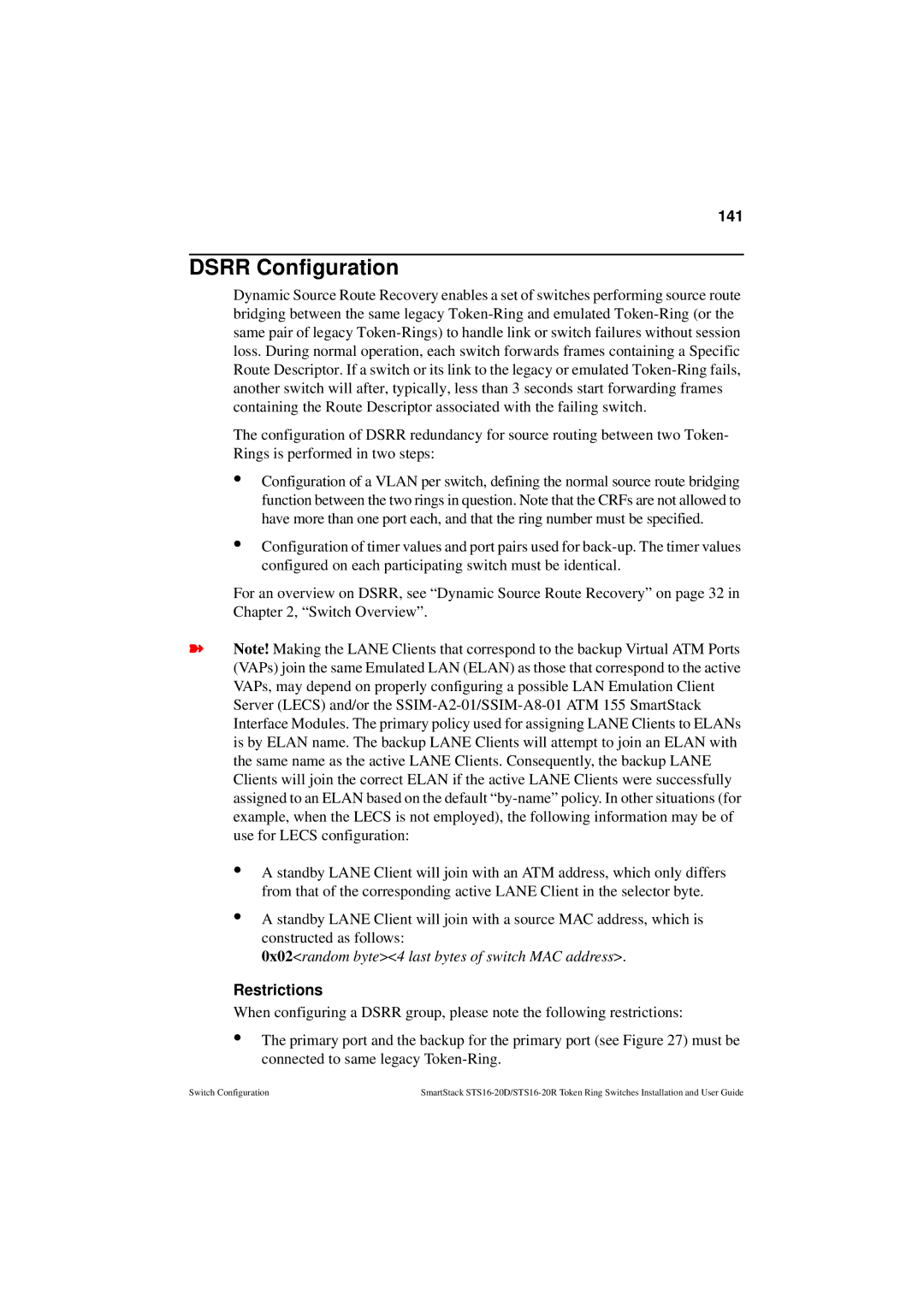141
DSRR Configuration
Dynamic Source Route Recovery enables a set of switches performing source route bridging between the same legacy
The configuration of DSRR redundancy for source routing between two Token- Rings is performed in two steps:
•
•
Configuration of a VLAN per switch, defining the normal source route bridging function between the two rings in question. Note that the CRFs are not allowed to have more than one port each, and that the ring number must be specified.
Configuration of timer values and port pairs used for
For an overview on DSRR, see “Dynamic Source Route Recovery” on page 32 in Chapter 2, “Switch Overview”.
➽Note! Making the LANE Clients that correspond to the backup Virtual ATM Ports (VAPs) join the same Emulated LAN (ELAN) as those that correspond to the active VAPs, may depend on properly configuring a possible LAN Emulation Client Server (LECS) and/or the
•
•
A standby LANE Client will join with an ATM address, which only differs from that of the corresponding active LANE Client in the selector byte.
A standby LANE Client will join with a source MAC address, which is constructed as follows:
0x02<random byte><4 last bytes of switch MAC address>.
Restrictions
When configuring a DSRR group, please note the following restrictions:
•The primary port and the backup for the primary port (see Figure 27) must be connected to same legacy
Switch Configuration | SmartStack |
